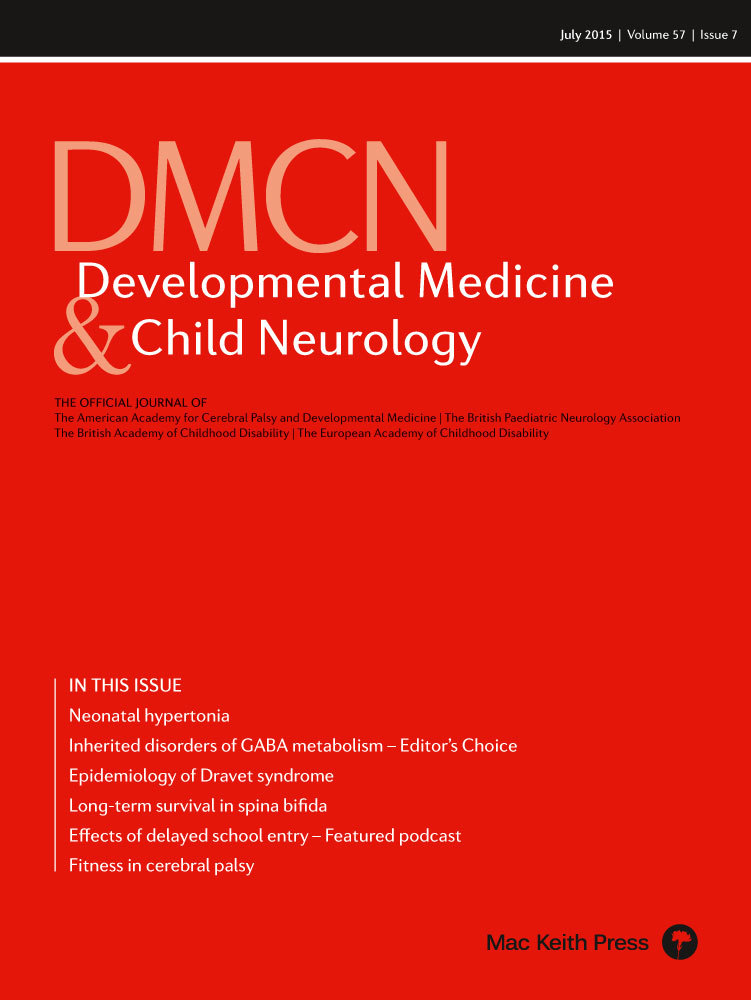Should children with cerebral palsy exercise?
Abstract
This commentary is on the original article by Balemans et al. on pages 660–667 of this issue.
Should children with cerebral palsy (CP) exercise? Surely they should. The received wisdom on the value of exercise has approached the level of self-evident. That is, until Van Wely et al.1 reported that a 6-month home-based programme of physical activity, comprising lifestyle counseling and fitness training – including strengthening and anaerobic exercises – neither increased physical fitness nor improved physical activity in ambulant children with CP, when compared with traditional physiotherapy. In fact, in this randomized trial, neither group demonstrated any meaningful improvements in any of the outcome measures at the end of the 6-month programme, let alone 12 months from baseline. This was a disappointing finding. After all, there is indisputable evidence that children with CP are less fit, less strong, and less active than their typically developing peers.2 How, then, could a programme designed to increase fitness fail to show any benefits, even in the context of a well-designed trial? Perhaps the data deserved further scrutiny.
The investigators observed wide variation in responses among participants, prompting them to perform subgroup analyses of the secondary outcomes of the original trial, to explain why some children seemed to benefit while others did not. They explored, longitudinally, the association between changes in fitness (aerobic, anaerobic, and muscle strength) and changes in mobility capacity (gross motor function measure [GMFM] and 1-min walk test) over time. Their findings, reported by Balemans et al.3 were equivocal. In children with unilateral CP, the changes in different aspects of fitness were associated neither with each other nor with measures of mobility. However, in children with bilateral CP, changes in aerobic fitness were associated with changes in anaerobic fitness, and weakly associated with changes in muscle strength. In multivariate analyses, anaerobic fitness and knee strength were the most important determinants of improvements in GMFM, while anaerobic fitness and hip abductor strength was associated with increased walking capacity.
The rationale for such secondary analyses is understandable, but must be considered cautiously in the face of an increased probability of finding significant associations merely by chance. In children with bilateral CP, the observed improvements in fitness, GMFM, and walking capacity were modest at best, and, arguably, of little clinical significance. The 6-month supervised home programme, with components of fitness, strength training, as well as counseling, can hardly be dismissed as an inadequate ‘dose’ of exercise. If the intensity and duration of such a programme are inadequate, how feasible would it be for children with CP to access or participate in an ‘adequate’ exercise programme outside the context of a controlled trial?
On the other hand, perhaps the benefits of exercise lie elsewhere. The intended goal of the intervention programme was to increase physical activity. It could be argued that participation in the programme was, in itself, successful in increasing participants' physical activity, even if no measurable functional gains resulted. It would be interesting to know what participants thought of the programme. In a separate report, the intervention group did demonstrate higher levels of social participation in domestic life after 12 months than their counterparts in the comparison group.4
So, should we recommend exercise for children with CP and, if so, for what benefits exactly? The literature suggests that aerobic exercise can improve physiological outcomes in children with CP, but evidence that these changes have any meaningful impact on outcomes of activity and participation remains elusive.5 This trial does not change that conclusion; therefore, the answer to the question has to be no (at least not yet) if those outcomes are the ultimate and only goals of exercise. It is plausible that, for most children with CP, the largest benefits of exercise might be of a preventative nature. The apparent negative outcome (no change) in this trial might, over time, be proven to be a positive one, if exercise contributes to preserving function and mobility, which are otherwise known to deteriorate during adolescence and young adulthood, or contribute to long-term health benefits. Since these benefits are based on ‘common-sense’ rather than ‘evidence’, we should recommend exercise for children with CP no less (or no more) than we do for all children, while we continue to study the long-term impacts of exercise, along with how best to create opportunities for children with CP and other developmental disabilities that allow them to effectively and sustainably engage in healthy lifestyles.




